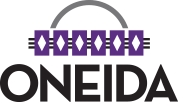Participation Opportunities
Activate your fun side through well being
According to the Oneida Community Health Study, 2012:
- 62% of respondents exercised during the last month and 37% did not,
- Of those that exercised the average number of days with moderate exercise was 3 days per week for less than 30 minutes per day.
Activity Recommendations
Key Guidelines for Children and Adolescents
- Children and adolescents should do 60 minutes (1 hour) or more of physical activity daily.
- Aerobic: Most of the 60 or more minutes a day should be either moderate- or vigorous-intensity aerobic physical activity, and should include vigorous-intensity physical activity at least 3 days a week.
- Muscle-strengthening: As part of their 60 or more minutes of daily physical activity, children and adolescents should include muscle-strengthening physical activity on at least 3 days of the week.
- Bone-strengthening: As part of their 60 or more minutes of daily physical activity, children and adolescents should include bone-strengthening physical activity on at least 3 days of the week.
- It is important to encourage young people to participate in physical activities that are appropriate for their age, that are enjoyable, and that offer variety.
Key Guidelines for Adults
- All adults should avoid inactivity. Some physical activity is better than none, and adults who participate in any amount of physical activity gain some health benefits.
- For substantial health benefits, adults should do at least 150 minutes (2 hours and 30 minutes) a week of moderate-intensity, or 75 minutes (1 hour and 15 minutes) a week of vigorous-intensity aerobic physical activity, or an equivalent combination of moderate- and vigorous intensity aerobic activity. Aerobic activity should be performed in episodes of at least 10 minutes, and preferably, it should be spread throughout the week.
- For additional and more extensive health benefits, adults should increase their aerobic physical activity to 300 minutes (5 hours) a week of moderate intensity, or 150 minutes a week of vigorous intensity aerobic physical activity, or an equivalent combination of moderate- and vigorous-intensity activity. Additional health benefits are gained by engaging in physical activity beyond this amount.
- Adults should also do muscle-strengthening activities that are moderate or high intensity and involve all major muscle groups on 2 or more days a week, as these activities provide additional health benefits.
Key Guidelines for Older Adults
The Key Guidelines for Adults also apply to older adults. In addition, the following Guidelines are just for older adults:
- When older adults cannot do 150 minutes of moderate-intensity aerobic activity a week because of chronic conditions, they should be as physically active as their abilities and conditions allow.
- Older adults should do exercises that maintain or improve balance if they are at risk of falling.
- Older adults should determine their level of effort for physical activity relative to their level of fitness.
- Older adults with chronic conditions should understand whether and how their conditions affect their ability to do regular physical activity safely.
Source: https://health.gov/paguidelines/guidelines/summary.aspx
Getting Started
Before starting an exercise routine:
- If you have a medical condition or any major health risks, you should consult with a physician to help determine how fit your are to exercise.
- You should start with a Fitness Assessment to help set realistic goals for improvement.
- Start slow and go slow.
Warm up
Before you exercise, think about warming up your muscles like you would warm up your car. It increases the temperature and flexibility of your muscles, and helps you be more efficient and safer during your workout. A warm-up before moderate- or vigorous-intensity aerobic activity allows a gradual increase in heart rate and breathing at the start of the activity.
Tips:
- Warm up for 5 to 10 minutes. The more intense the activity, the longer the warm-up.
- Do whatever activity you plan on doing (running, walking, cycling, etc.) at a slower pace (jog, walk slowly).
- Use your entire body. For many people, walking on a treadmill and doing some modified bent-knee push-ups will suffice.
Warm Up Exercise:
Quick Warm Up Exercises
5 Minute Total Body Warm Up
Quick Total Body Low Impact Warm Up
After the Warm Up:
- Cardiovascular activity. Start by doing an aerobic activity, like walking or running, for a sustained 20-30 minutes, four to five times a week, says Bryant. To ensure you’re working at an optimum level, try the “talk test”: Make sure you can carry on a basic level of conversation without being too winded. But if you can easily sing a song, you’re not working hard enough.
- Strength conditioning. Start by doing one set of exercises targeting each of the major muscle groups. Bryant suggests using a weight at which you can comfortably perform the exercise eight to 12 times in a set. When you think you can handle more, gradually increase either the weight, the number of repetitions, or number of sets. To maximize the benefits, do strength training at least twice a week. Never work the same body part two days in a row.
- Strength Workouts
10 minute Abs
Total Body Strength & Tone (40 minutes) – need dumbbells and chair
Total Body Functional Strength & Toning – need a mat
Upper Body & Abs – no equipment needed
- Strength Workouts
- Flexibility training. The American College on Exercise recommends doing slow, sustained static stretches three to seven days per week. Each stretch should last 10-30 seconds.
To learn how to perform certain exercises, consider hiring a personal trainer for a session or two, or take advantage of free sessions offered when you join a gym.
Cool Down
Cooling down after a workout is as important as warming up. After physical activity, your heart is still beating faster than normal, your body temperature is higher and your blood vessels are dilated. This means if you stop too fast, you could pass out or feel sick. A cool-down after physical activity allows a gradual decrease at the end of the episode.
It’s good to stretch when you’re cooling down because your limbs, muscles and joints are still warm. Stretching can help reduce the buildup of lactic acid, which can lead to muscles cramping and stiffness.
Tips:
- Walk for about 5 minutes, or until your heart rate gets below 120 beats per minute.
- Stretching:
- Hold each stretch 10 to 30 seconds. If you feel you need more, stretch the other side and return for another set of stretching.
- The stretch should be strong, but not painful.
- Do not bounce.
- Breathe while you’re stretching. Exhale as you stretch, inhale while holding the stretch.
Cool Down Exercises:
Fast 5 Minute Cool Down & Stretch
Light Cardio & Stretching Cool Down
Total Body Stretch Cool Down
Nutrition and Exercise
Nutrition plays a large role in performance and recovery. Click the link to learn more about the role carbohydrates, protein, fats, and proper hydration play in your routine. Fueling Sport and Exercise





